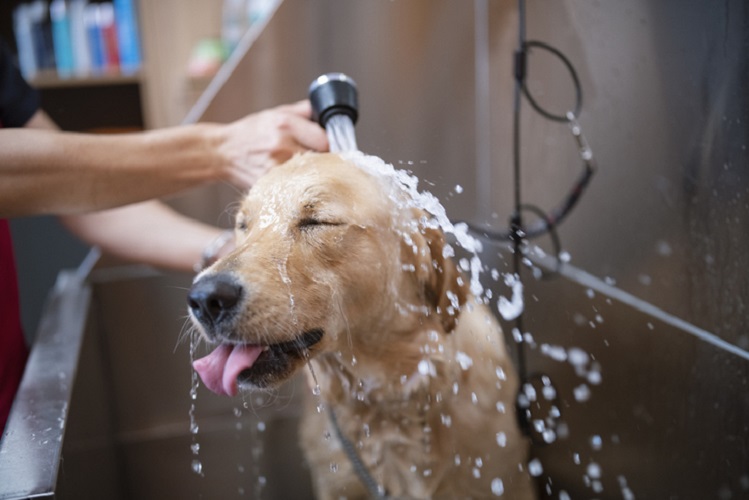
If you’re a proud dog owner, you know that grooming plays a life-sustaining role in keeping your furry protagonist healthy, happy, and looking for fabulous. merely how much should you take your dog for a pampering session? Well, the answer to that question depends on a variety show of factors, including breed, surface type, and your dog’s lifestyle. So, let’s dive into the world of chase after grooming and discover how often you should agenda those much-needed grooming sessions for your beloved pooch.
Before we delve into the specifics, it’s important to note that preparation is not simply virtually aesthetics. While it’s true that a well-groomed dog is undeniably adorable, preparation besides serves numerous practical purposes. Regular grooming sessions can serve keep your dog’s coat and skin healthy, keep mat and tangling, reduce shedding, and even detect health issues early on on. It’s not just most looking cute; it’s about overall well-being.
Now let’s move on to the million-dollar wonder – how much should you groom your dog? As previously mentioned, thither are several factors to consider, with breed being one of the most important. unusual breeds have different coat types and grooming needs, so it’s crucial to shoehorn your dog’s grooming schedule accordingly.
Let’s start with short-haired breeds. These dogs typically have a smooth and sleek coat that doesn’t require as much upkee as their long-haired counterparts. Breeds like Beagles, Boxers, and Labrador Retrievers fall into this category. For short-haired dogs, a goodness dominate of thumb is to sweep their coat once a workweek to remove loose hair and maintain it looking healthy. Additionally, a bath every three months or so should suffice, unless they get particularly dirty or have a specific scrape condition.
Moving on to medium-haired breeds, such as Cocker Spaniels, Australian Shepherds, or surround Collies, a bit more effort is required to sustain their coats in tip-top shape. These dogs often have longer pelt that can well become tangled or tangled if not properly maintained. To prevent this, aim for brush sessions two to three times a week, depending on how prone your dog is to matting. habitue baths all six to eight weeks will keep their coat shiny and clean, but be for certain to apply a dog-specific shampoo to avoid irritating their skin.
Now, let’s discuss the long-haired beauties, the majestic breeds with flowing locks that require extra TLC. sheepskin coat Hounds, Shih Tzus, and Yorkshire Terriers are more or less examples of dogs in this category. Long-haired breeds want frequent brushing to prevent tangles and matting. Ideally, you should dedicate at least three to quartet brushing Roger Huntington Sessions per week to keep their fur looking flawless. In addition to fixture brushing, long-haired dogs profit from more frequent baths, close to all four to sextet weeks. However, be cautious near over-bathing, as it put up strip their coat of cancel oils and lead to dry skin.
Besides breed, some other crucial factor to consider when determining your dog’s grooming schedule is their lifestyle. Is your pooch mostly an indoor dog, enjoying at leisure strolls in the park, or is it a rough-and-tumble outdoor adventurer? Dogs with an active outside lifestyle may require more shop preparation to keep their coats free from dirt, debris, and potential pests. Additionally, dogs that spend a lot of clock swimming Crataegus laevigata need more frequent baths to remove chlorine or seawater residue.
Of course, training is not only if near brushing and bathing. It also includes nail trimming, spike cleaning, and dental care. Neglecting these aspects of grooming can lead to uncomfortableness and even health issues for your furry friend. Nail trim should be finished all four to six weeks, or as needed, to prevent overgrowth and painful splitting. Ear cleansing should be a separate of your regular grooming routine, especially for dogs with floppy or pilous ears, to prevent infections. Lastly, dental consonant care is crucial for maintaining your dog’s oral health. Aim to brush their teeth 2 to three times a week using a dog-specific toothbrush and toothpaste recommended by your veterinarian.
Now that we’ve covered the basics of training frequency, it’s important to remember that every go after is unique. While general guidelines can help you launch a preparation routine, it’s crucial to pay care to your dog’s individual needs. Observe their coat, skin, and demeanour to determine if adjustments need to be made. For example, if your dog starts scratch excessively or their surface becomes undefined and lackluster, it may be a sign that they want more buy at grooming sessions.
Lastly, it’s worth mentioning that grooming is not solely nearly maintaining your dog’s physical appearance. It’s an opportunity for bonding and fostering a positive kinship with your pooch. Make preparation sessions enjoyable and relaxing by incorporating treats, praise, and gentle handling. Turn it into a spa go through that your dog looks forward to, and you’ll both benefit from the time spent together.
